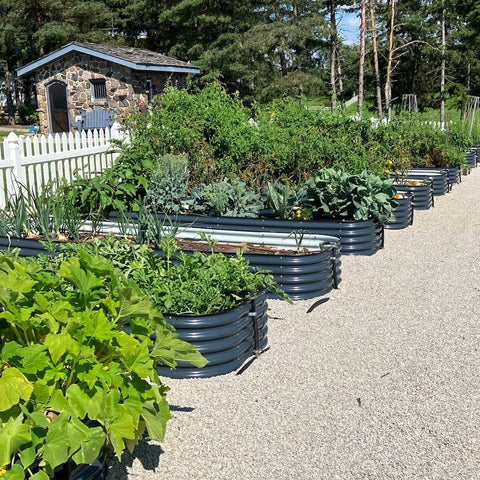Knowledge from Olle Garden Bed: Planting Carrots and Root Crops
Root Crops
The garden beds offer a delightful array of underground delights, starting with the crunchy sweetness of carrots. European parsnips have experienced a resurgence, thanks to their nutty sweetness when lightly roasted. Moreover, the newfound appreciation for vegetarian cuisine has sparked a surge of interest in radishes and turnips, two root crops that have long been regarded as reserve foods during challenging times.

Because they grow underground, the quality of all root vegetables improves with loose soil rich in organic matter. Sandy loam is the best soil, but you can certainly grow any root crop in clay soil by incorporating organic matter. If your soil is particularly rocky, heavy, or compacted, consider creating a raised bed for carrots and other root crops. Fill it with a soil mixture containing plenty of sand and organic material, such as a nursery mix.
Carrot seeds are especially sensitive to hot weather. If you're sowing them in late summer for a fall crop, cover the seeds with something like an unopened cardboard box to shade them and keep the soil cool. Check under the cardboard daily, and remove it once seedlings emerge.
Fertilizing Root Crops
Carrots and parsnips often become forked, twisted, or misshapen when grown in soil with pockets of fertilizer, so it's essential to thoroughly mix the fertilizer into the soil before planting. Use a vegetable food containing timed-release nutrients. You might hear or read elsewhere that when these crops are grown in sandy, porous soils, they need extra feeding once they reach four inches tall. However, this step is unnecessary when planting carrots in regular or heavier-textured soil or using timed-release fertilizer with longer duration than most publications and government advisories recommend.
Turnips and rutabagas also benefit from a vegetable food containing timed-release nutrients applied to the soil before planting. This single application is typically enough to meet their needs. Once the roots start swelling, provide additional water if necessary. Adequate moisture nearing the harvesting season helps turnips and rutabagas grow larger and sweeten.
Facts about Carrots and Parsnips
Light: Full sun
Soil: Well-drained
Water: When soil becomes dry
Spacing: Sow seeds 1 inch apart; thin to about 4 inches apart
Cold Hardiness: Vegetables for cold weather
Both crops can stay in the ground for several weeks; dig as needed if the soil remains cool.

Facts about Radishes and Turnips
Light: Full sun
Soil: Well-drained
Water: When soil becomes dry
Spacing: Sow seeds 1 inch apart; thin radishes to 6 inches and turnips to 15 inches apart.
Cold Hardiness: Vegetables for cold weather
After harvesting mature radishes and turnip greens, store them in a cool place for several weeks.
